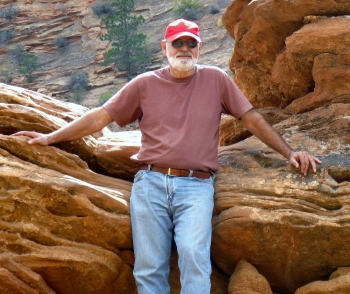
Written by Paul Van Dam
Sustainability is what it’s all about, whether on a local level or worldwide. Even if we think globally, as we all should, we need to act locally. If we all do that, perhaps there’s hope for this lovely Earth we call home.
What’s your “vision” for Washington County? How big do you want Washington County to be? How will growth affect your quality of life and that of your loved ones? These are questions we should all be asking. Growth is filling this valley, and life will change. Is the current course we’re on sustainable?
What is “sustainability?” Webster defines it as being “able to last or continue for a long time,” “involving methods that do not completely use up or destroy natural resources.” Scientific American defines “sustainable” as “development that meets the needs of the present without compromising the ability of future generations to meet their own needs.” In other words, “Don’t take more than your share.” Are we taking more than our share? I don’t know, but I do know that some realities exist.

Growing up in Salt Lake City, I witnessed the changes that have resulted in the area’s diminished air quality and general quality of life, forcing many to flee to other locations. Washington County has a plan called “Vision Dixie” that, if properly implemented, may prevent a similar situation here. I’ve watched this county grow from several thousand residents to the current estimated 155,000, with a projected 500,000 and probably more by 2060. That’s a lot of folks to pack into this area, which possesses great beauty due to its geology – geology that also poses growth challenges. We have one major highway, I-15, with the ever-vulnerable Virgin River Gorge to the west. With no rail line, all supply relies on the I-15 corridor. The rugged landscape makes an effective road network untenable.
Southern Utah faces critical water resource challenges, as do many other locations worldwide. Forecasts show the entire region will experience shortages of water by 2030 unless changes are made in the way we manage our current water resources and plan for the future. Currently, we use more water per capita than any other Southwest area, and we pay less for it. This is not sustainable.
Strategies that attempt to shift our declining surface and groundwater resources from one area to another — at huge costs in terms of infrastructure and energy, such as the proposed Lake Powell Pipeline project — will put off the need to change our current practices onto future generations rather than solving our problem. The Lake Powell Pipeline is no billion-dollar project; in fact, it will cost much more. Look at the $15 billion Nevada pipeline and do the math.
Water providers often like to look back at this area’s ancestors, pioneers armed with grit and determination to “make the desert bloom.” When the area was first being developed and the population was low, the lovely Virgin River, Santa Clara River, and area springs and wells seemed sufficient to provide a sustainable environment if they could just be harnessed. Would self-sufficient pioneers view our current situation with the same attitude? Old farmers in the area, who are willing to admit it, say that an expensive water pipeline is not what’s needed.
Growth comes with responsibility on the part of each individual, and our leaders to the people who want a sustainable future. Young families in Washington County want a bright future for their children, as do parents all over this world. Washington County can grow and maintain quality of life with sound decisions. We do not need to burden citizens with costly projects that do not serve this county’s citizens.
So, I ask again, how big do you want Washington County to be? How can we create a sustainable future for our county without diminishing our quality of life now, and that of future generations?



